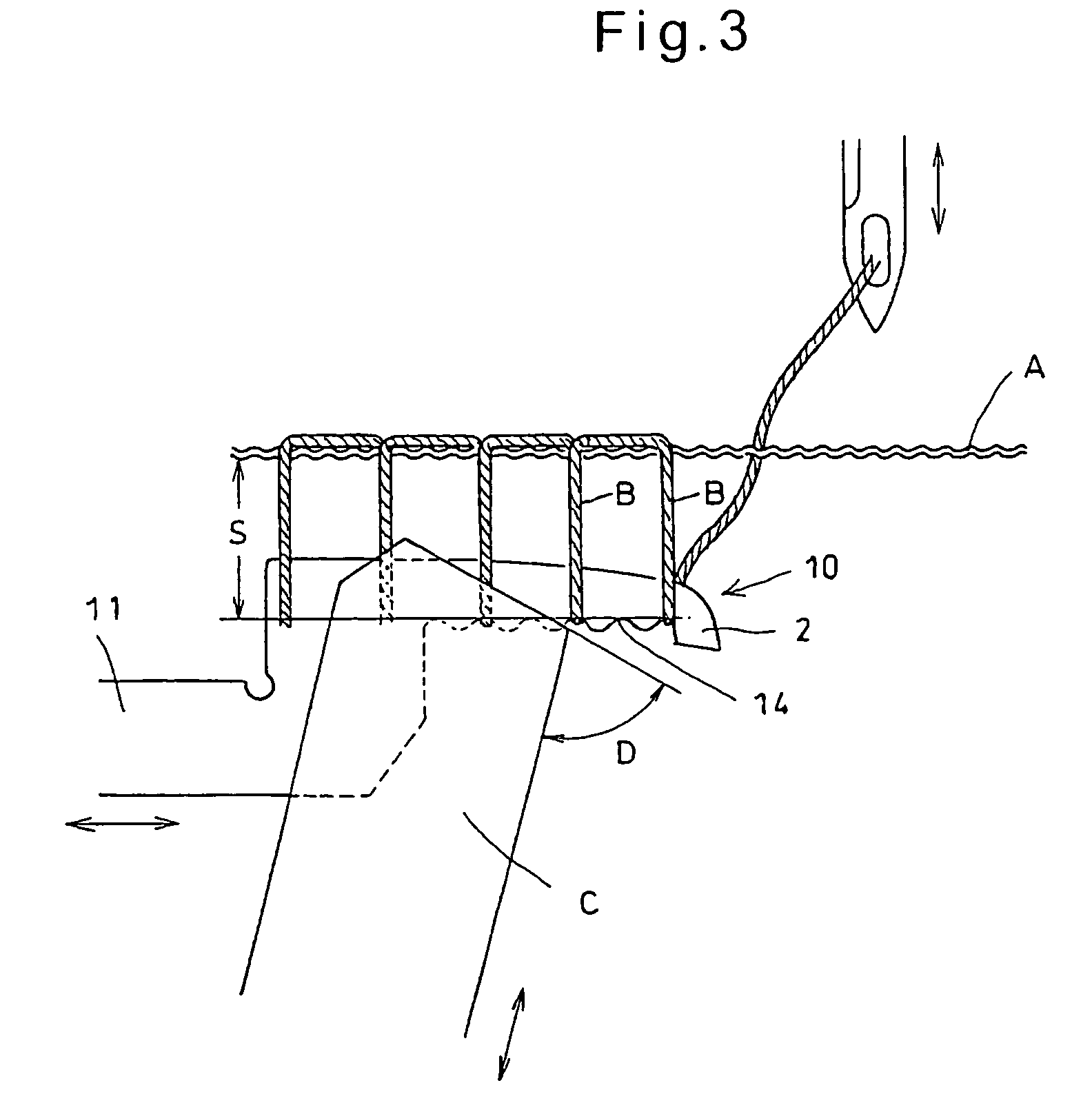Looper for tufting machine
a looper and looping machine technology, applied in the field of loopers, can solve the problems of large amount of yarn material waste, damage to backing cloth and carpet, and difficulty in uniform cutting of loops with conventional loopers with flat edges, so as to achieve smooth cutting of yarns, reliable and precise cutting
- Summary
- Abstract
- Description
- Claims
- Application Information
AI Technical Summary
Benefits of technology
Problems solved by technology
Method used
Image
Examples
Embodiment Construction
[0014]Now an embodiment of the present invention is described with reference to FIGS. 1 to 5. As shown in FIG. 1, a looper 10 according to the present invention comprises a base portion 11 supported on a looper block, which is described later, a neck portion 12 extending substantially vertically upwardly from the base portion 11, and a hook throat portion 13 extending substantially horizontally from the neck portion 12 and having a bottom edge 14 which is formed with corrugations along an entire length thereof or partly along the length thereof. The corrugations are typically formed with equal pitches p and heights h. But the corrugations may be formed such that their pitches and / or heights decrease gradually toward a tip of the hook throat portion 13. Preferably, the corrugations have heights h in the range of about 0.01 to 2 mm, more preferably in the range of about 0.1 to 2 mm, and pitches p in the range of about 0.01 to 6 mm, more preferably in the range of about 0.1 to 6 mm.
[00...
PUM
 Login to View More
Login to View More Abstract
Description
Claims
Application Information
 Login to View More
Login to View More - R&D
- Intellectual Property
- Life Sciences
- Materials
- Tech Scout
- Unparalleled Data Quality
- Higher Quality Content
- 60% Fewer Hallucinations
Browse by: Latest US Patents, China's latest patents, Technical Efficacy Thesaurus, Application Domain, Technology Topic, Popular Technical Reports.
© 2025 PatSnap. All rights reserved.Legal|Privacy policy|Modern Slavery Act Transparency Statement|Sitemap|About US| Contact US: help@patsnap.com



